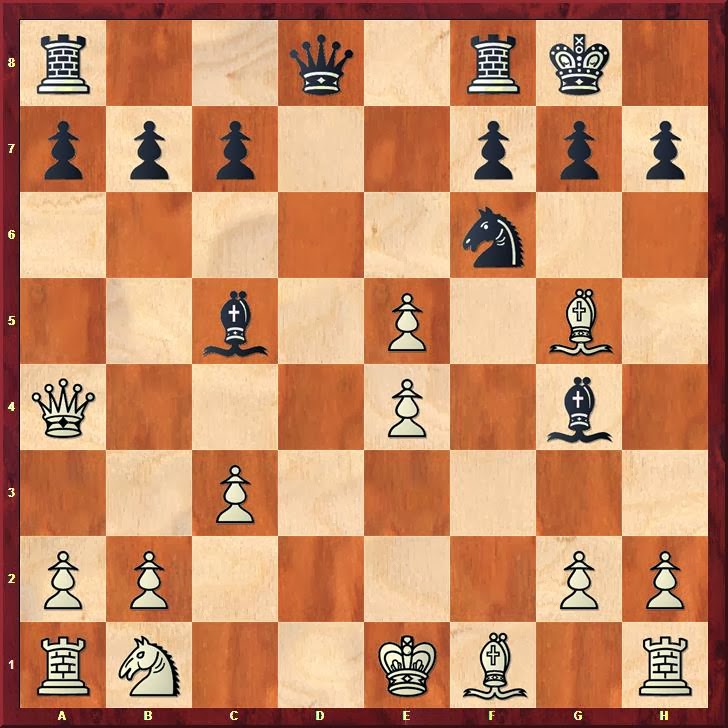Here is the tactics problem.
Black to move
If my young student's memory is strong, she will have the tactical vision to solve this position rather quickly.
The game itself featured interesting complications and has been the subject of much discussion on chessgames.com.
Pulvermacher,Albert -- Capablanca,Jose Raul [C30]
New York, 1907
1.e4 e5 2.f4 Bc5 3.Nf3 d6 4.c3 Bg4 5.fxe5
According to the ChessBase Online database, this game was the first in which 5.fxe5 was played. 5.Bc4, the most popular choice overall, and 5.Be2 were the normal moves prior to this game. It may be of interest to regular readers of this blog that Spielmann -- Tarrasch, Karlsbad 1923 (the source of this week's "Lesson of the Week") also featured this move.
My young students also might observe that Capablanca's fourth move violated one of Lasker's rules. However, in this case, I think that we should side with Capablanca.
5...dxe5 6.Qa4+
Black to move
6...Nd7
6...Bd7 seems objectively best and is the overwhelming favorite among the 52 games in ChessBase Online. Capablanca's move appears in four games.
7.Nxe5 Ngf6 8.d4 0–0
White to move
9.Bg5?
White should have played 9.Nxg4. Does White then have an advantage. It seems so at first. There has been much debate on this point at chessgames.com. One of those active in the discussion, Tryfon Gavriel (aka Kingscrusher) has also made an interesting YouTube video on the topic. I will not replicate that analysis here, but rather suggest that readers take a look.
9...Nxe5 10.dxe5 Nxe4 0–1

















No comments:
Post a Comment